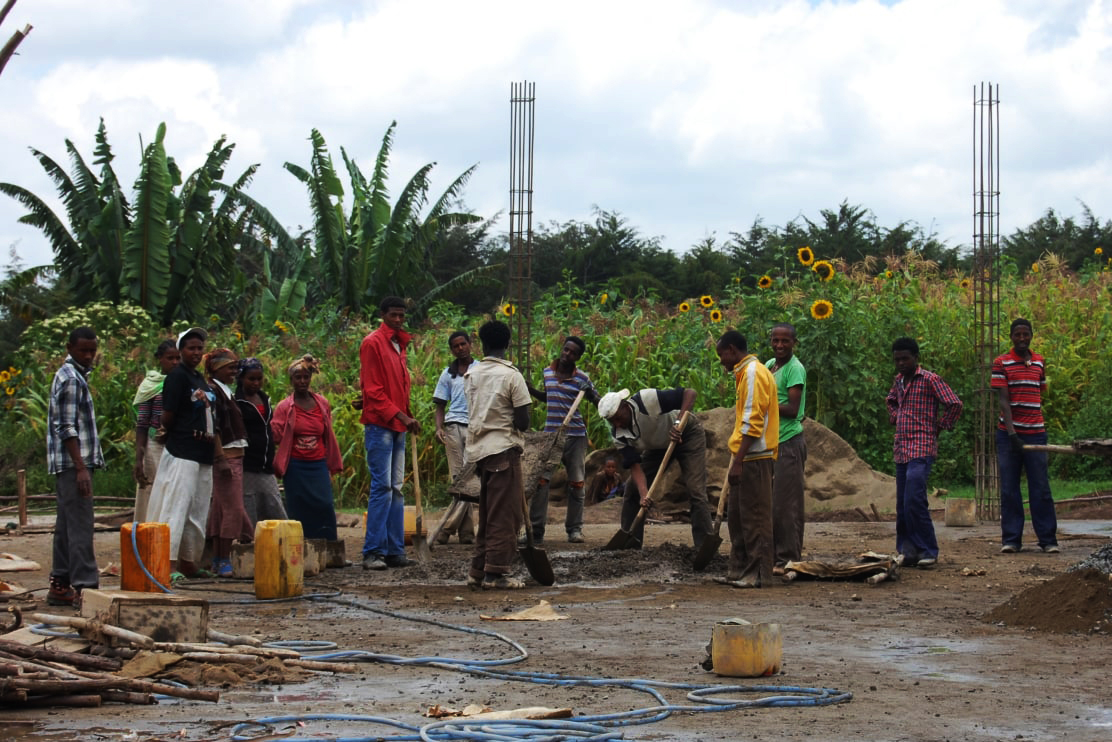Improving the living conditions of smallholder farmers is key for the achievement of most Sustainable Development Goals (SDGs), and specifically for the achievement of SDG1-No poverty and SDG2-Zero hunger. Although modernizing agriculture and promoting rural development is not a sufficient condition for eradicating poverty (SDG1) and achieving food security (SDG2), it is an important ‘‘policy entry point” to pursue these goals. In the paper “Disentangling the impact of a multiple-component project on SDG dimensions: The case of durum wheat value chain development in Oromia (Ethiopia)”- published on the February issue of World Development (2022) – ARCO Researchers assess the impact of a value chain development project on smallholder households focusing on the relationship between the food security goal (SDG2) and other SDG-related outcomes such as education (SDG4) and collective action and social capital (SDG16).
Using ‘‘agriculture for development” (World Bank, 2007) usually requires to go through a sequence that starts from building assets for SHF, increases the productivity in staple foods, and then proceeds through the diversification of farming systems toward high value crops, and ends up with the diversification of rural context through the development of non-farm activities linked to agriculture. However, extensive market and government failures have hindered SHF modernization. Overcoming such failures can be achieved through two complementary strategies:
- (i) a supply-side strategy where public and social agents (governments, international and bilateral development agencies, NGOs, donors) intervene to help farmers overcome the major constraints to adoption (e.g. liquidity, risk, information, and access to markets),
- (ii) a demand-side strategy, where private agents (entrepreneurs, producer organizations) create incentives for smallholder farmers to modernize through contracting and vertical coordination in value chains.
Pursuing these strategies requires complex interventions, designed as multifaced projects/programs integrating several components such as transfer of productive assets, consumption support, training and coaching, savings encouragement, and provision of education and health services. There is evidence that such an integrated approach is more effective in improving livelihoods among the poor – and able to bring more lasting results – that stand-alone interventions. These integrated interventions are expected to affect several development dimensions, going well beyond eradicating poverty or ensuring food security. For these reasons, these integrated interventions represent suitable case studies to explore the multiple impacts of complex interventions on various SDGs as well as trade-offs and synergies among them.
The impact evaluation of the project AVCPO
To investigate these effects, authors focused on the project AVCPO – the Agricultural Value Chain Project Oromia, in the Bale region (Ethiopia). The AVCPO project adopts the two complementary strategies mentioned above and offers to SHF cooperative members a package of interventions – i.e. training, seed provision, storage, processing, and marketing through cooperatives – aiming at stimulating their participation in a high-quality durum wheat value chain, i.e. access to market via institutional and organizational changes.
ARCO was involved in the project AVCPO to carry out the impact evaluation of the project. The impact evaluation was based on data collected in 2014 via a survey coordinated by ARCO experts in cooperation with the Ethiopian research & extension centre SARC (Sinana Agricultural Research Center).
The information gathered from in-depth interviews with key stakeholders, including AVCPO staff and researchers from the Sinana Agricultural Research Center (SARC), were used to formulate the questionnaire, to identify participating cooperatives and farmers as well as to develop the sample design.
The data were then analysed using several different econometric techniques. In order to assess the AVCPO’s impacts, they applied an instrumental variable (IV) approach. To test the robustness of the results, due to the possible violation of the exclusion restriction assumption, three additional – recently developed – estimation strategies were implemented: a sensitivity analysis approach, an IV estimation on a sub-sample determined by propensity score matching (PSM) without replacement and a non-parametric approach. The impact of the different components of the project (input provision, training, marketing, storage) was measured by using the Multivalued Treatment Effect technique.
The impact on SDG 2, SDG 4 e SDG 16
The study shows that the aggregate impact is positive and significant on most of the considered outcomes, namely food security (SDG2) except diet diversification, education (SDG4) of girls but not of boys, and collective action (SDG16), while social capital (SDG16) is significant only as far as horizontal relationships within the community are created. Disentangling the aggregate impact, we show that combined treatments generally return larger impacts than stand-alone treatments. Finally, the study finds that collective action (SDG16) is an important channel that favors food security improvement (SDG2) but only to a lesser extent better education (SDG4).
